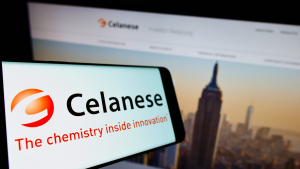
Almost one year ago, I picked three of the best stocks to buy with $500. The caveat was that their combined share prices had to be equal or near $500.
The three stocks were Steel Dynamics (NASDAQ:STLD), Targa Resources (NYSE:TRGP) and United Rentals (NYSE:URI). Their combined share prices were $509.37, so the total went over by $10. Today, they’re $909.74, a one-year gain of nearly 79%, 3.2 times the S&P 500.
Not too shabby.
Encouraged by these results, I’ll try to repeat the performance. Given the gains achieved by stocks overall over the past year, it will be more challenging.
“Because price and value are two different things, I’m looking for cheap stocks with high potential. Therefore, I screened for stocks with low price-to-free-cash flow (P/FCF) and price-earnings-to-growth (PEG) ratios,” I wrote last May.
As I did last year, I’ll select my three names from the index, and they’ll be three new names, not carryovers from last year.
Tapestry (TPR)

Tapestry (NYSE:TPR) owns Coach, Kate Spade and Stuart Weitzman. According to Morningstar.com, Tapestry’s PEG ratio is 1.03, while its market capitalization of $9.0 billion is just 6.9 times its free cash flow of $1.30 billion.
The Federal Trade Commission has taken an unprecedented move, filing suit to block Tapestry’s $8.5 billion proposed takeover of Capri Holdings (NYSE:CPRI), the owner of Michael Kors, Versace and Jimmy Choo.
“With the goal to become a serial acquirer, Tapestry seeks to acquire Capri to further entrench its stronghold in the fashion industry,” said Henry Liu, Director of the FTC’s Bureau of Competition. “This deal threatens to deprive consumers of the competition for affordable handbags, while hourly workers stand to lose the benefits of higher wages and more favorable workplace conditions.”
It is strange that the FTC is worried about affordable handbags. It’s so odd that one of the wealthiest countries in the world doesn’t have a competitor to LVMH (OTCMKTS:LVMUY) and all the other luxury conglomerates in Europe and Asia.
Whether or not the FTC is successful, TPR is undervalued and worth holding for the long haul.
Its $39.48 share price as of May 6 is 7.8% of $500.
Celanese (CE)

Celanese (NYSE:CE) is the world’s largest producer of acetic acid. Its high-performance engineered polymers serve various industries, including automotive, chemical additives, construction, consumer and industrial adhesives, medical and consumer electronics.
Analysts aren’t very optimistic about Celanese stock. Of the 24 that cover it, only six rate it a Buy, with a $160 target price, a tiny bit below how much it currently trades.
However, as PortfolioLabs.com points out, Celanese’s risk-adjusted returns are in the top 10% of U.S. stocks. Over the past 10 years, Celanese has had monthly returns of -20% or more on just two occasions out of 120.
This past year, Celanese focused on maximizing cash flow to pay down debt and increase cash on the balance sheet. The company’s record free cash allowed it to pay down $995 million of its debt in 2023, add $297 million and reduce its net debt by $1.3 billion to $12.29 billion.
Its $157.17 share price as of May 6 is 32% of $500.
Corpay (CPAY)

In March, Corpay (NYSE:CPAY),a global corporate payments company, rebranded its corporate identity, changing its name from Fleetcor Technologies to Corpay. The move reflected its commitment to corporate payment solutions.
“Corpay’s suite of modern payment solutions help its customers better manage vehicle-related expenses (such as fueling and parking), travel expenses (e.g., hotel bookings) and payables (e.g., paying vendors). This results in customers saving time and ultimately spending less,” states its investor relations page.
Corpay has three businesses: Corporate Payments at 26% of revenue, Vehicle Payments at 53% and Lodging Payments at 14%. Others at 7%.
In 2023, it generated $3.8 billion in revenue and $1.3 billion in adjusted net income. In the mid-term, it aims to grow organic revenue and adjusted net income by 10% and 17.5%, respectively. Since 2010, its compound annual growth rate for revenue and adjusted earnings per share has been 18% and 20%, respectively.
It’s a big reason its shares have generated a CAGR of 21.4% since going public at $23 in December 2010. As of May 6, its $299.29 share price is 61% of $500.
Of the 20 analysts covering its stock, 15 rate it a Buy, with a $330 target price, more than 10% above its current share price.
On the date of publication, Will Ashworth did not have (either directly or indirectly) any positions in the securities mentioned in this article. The opinions expressed in this article are those of the writer, subject to the InvestorPlace.com Publishing Guidelines.






